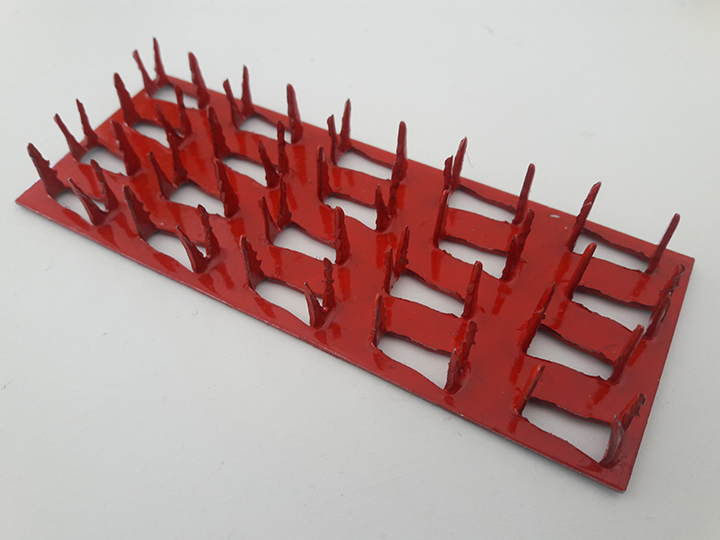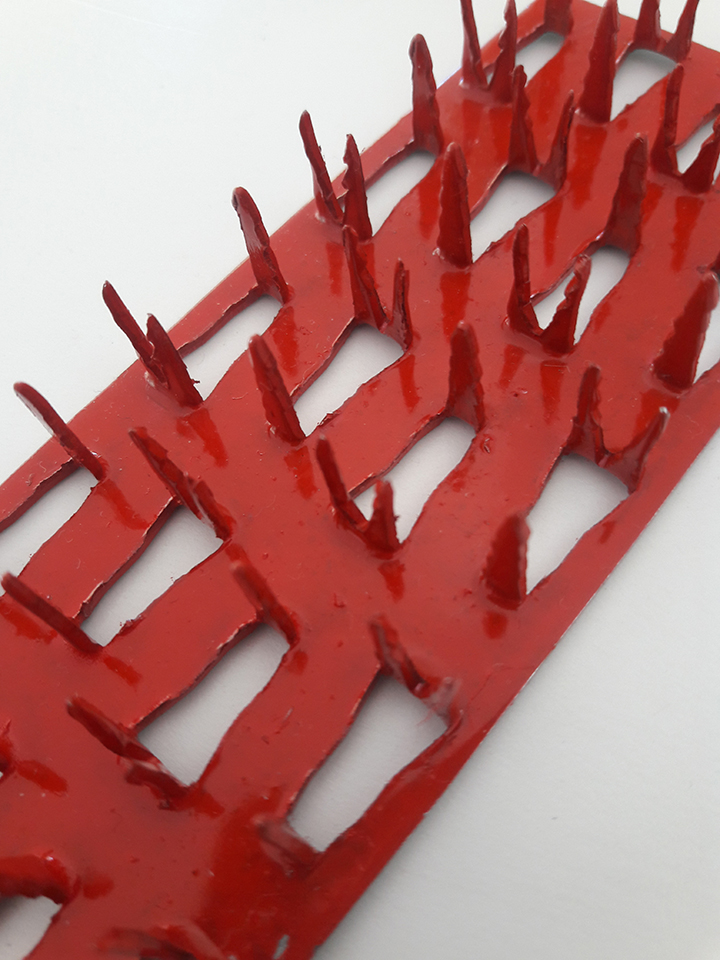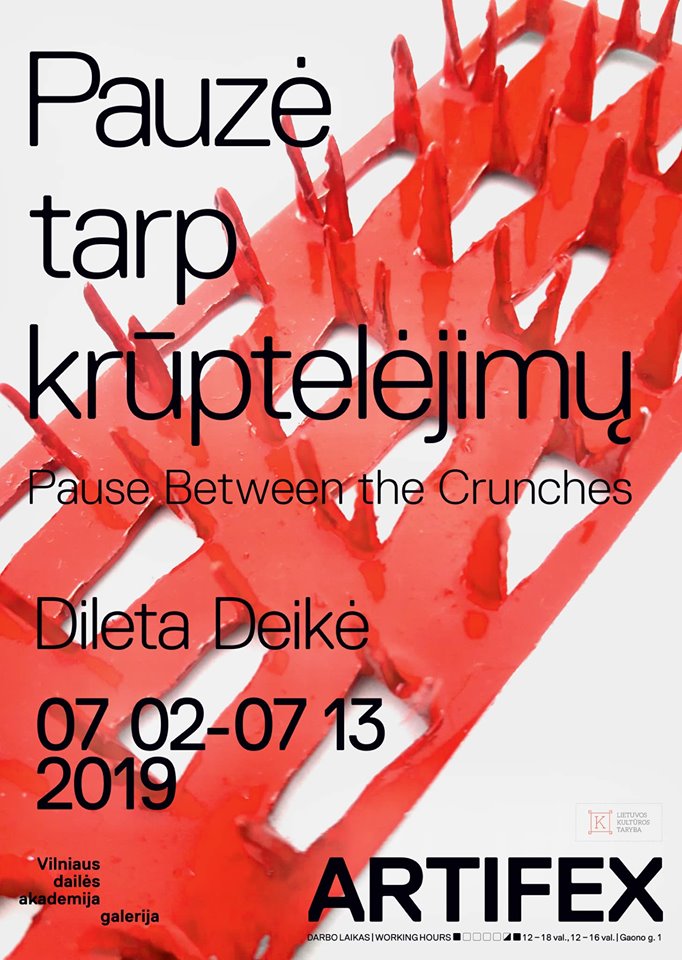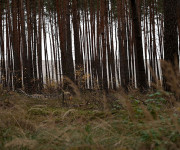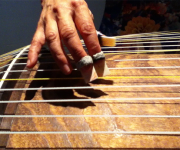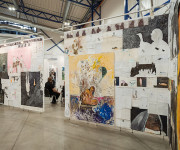The project by Dileta Deikė “Pause Between the Crunches” is a study of woman’s creativity and her place in the social art-free hierarchy. Albeit of being exhibited at Artifex Gallery, the project falls out the format and time of the exhibition because its important part took place at Vilnius city crisis centre. It is rather a long-lasting (never-ending) performance in which the artist tries out individual and collective tactics of survival.
Selecting a female embroidery technique and getting it to absurd is an individual way to survive trauma (either own or that of another woman). More precisely, to turn it into a daily meditation of modernity:
“I started creating a diary of woman’s daily routine when an embroidery of the day is dedicated to reflect a media report that is of relevance at the time. The topics are distressing – harassment, violence, gender stereotypes when women are allocated with less important or even humiliating roles. And those topics never end. Day by day media pushes with full strength that old rusty train of template representation of man and woman in the public space. I did not expect to occur in such deep darkness. The feeling of hopelessness not only embraced the thoughts but also the body. I felt no longer unable to do anything. What’s the point of doing anything if we don’t move forward? I stopped analyzing and collecting the articles so that I could continue my artistic practice. For several years, embroidery became a part of my identity”.
The artist was drawing inspiration during her visits to the Metropolitan Museum of Art in New York where the millennium-long creative history of the humanity was reflected by works of male artists, and women were just an object portrayed by the creators. And only in the 18th-19th centuries, exemplars of embroidery with images of an approximate environment appear as “examples of women’s education”. They are included as a documentation of extinct architecture. According to the artist, “embroidery of the women became an archive of architecture designed by men”. For this reason, when deliberately choosing handicrafts, Dileta questions the hierarchy of society and art.
It took her 20 months to embroider a landscape – neither specific nor abstract. As a semblance. Just as gender equality which is illusory by its nature. Dileta treats embroidery as “a form of resistance, a ticking bomb”. Not surprisingly, the embroidery which is reminiscent of a “sacred” picture of the perfect landscape is with fittings of metal. They, however, are sharp and not made of silver.
The second, collective, part of the project took place at Vilnius city crisis centre. Women who have experienced violence responded to the artist’s advert that was posted on social networking website. They agreed to donate a piece of clothing and share their story. The artist used the clothes of the women who got over painful experiences to crochet “the bodies of pain” that she later sewed one with another to form a carpet. The women residing at the crisis centre joined the united work process together with their children. Despite of help and support, only a few women dared to tell their story. The work by Dileta is sort of a pause between “I cannot yet” and “I don’t want anymore” that gives a chance of general sense.
Curator: Laima Kreivytė
Opening: JULY 2th 6 PM (07 02 – 07 13)

